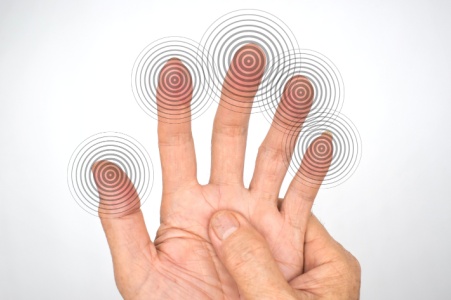Blog

Acupuncture is a therapeutic practice that involves inserting very thin needles into precise points on the body to stimulate healing and restore balance. The science behind acupuncture shows that these points correspond to nerve pathways that influence the nervous system, improve blood flow, and trigger the release of natural chemicals that reduce pain and inflammation. This method is effective for treating conditions like joint inflammation, muscle soreness, and chronic pain by promoting circulation and supporting the body’s natural healing processes. Acupuncture is a safe and non-invasive approach that can complement other medical treatments and improve overall well-being. If you are looking to reduce inflammation and enhance your body’s healing ability, it is suggested that you schedule an acupuncture appointment today to begin your path to relief.
Acupuncture as a Natural Complement to Chiropractic Care
Acupuncture has been used for thousands of years to help restore balance within the body. In modern chiropractic settings, acupuncture is often combined with adjustments to support healing and provide a more complete approach to care. Both practices are designed to work with the body’s natural systems rather than mask symptoms, which is why many patients find them effective together.
Acupuncture involves the placement of fine, sterile needles at specific points along the body. These points are believed to stimulate energy pathways, but they also trigger real physical responses such as improved circulation, release of muscle tension, and activation of the nervous system. For chiropractic patients, this can mean enhanced recovery after adjustments, reduced pain, and better mobility.
Many individuals seek acupuncture for back pain, headaches, muscle tightness, or stress. When combined with chiropractic care, the benefits often extend further, as alignment and energy flow are both addressed. This dual approach can also help people who experience chronic conditions, allowing the body to function with greater ease.
A chiropractor who offers acupuncture can tailor treatments to your unique needs, providing safe, natural options that work with your lifestyle. Sessions are typically gentle and calming, and many patients feel relief soon after beginning care.
If you are seeking a holistic way to manage pain and improve overall well being, schedule an appointment for a chiropractic acupuncture session with us today.

Neck pain can affect mobility and overall comfort. It may result from muscle strain due to poor posture or overuse, cervical disc degeneration that occurs with aging and wear, or injury from sudden movement or accidents. These issues can cause stiffness, headaches, and discomfort that radiates to the shoulders or arms. A chiropractor can help by identifying the underlying cause, performing gentle spinal adjustments, and using therapeutic techniques to reduce tension, improve alignment, and restore normal function. Regular chiropractic care can also prevent recurring pain and support better posture. If you have ongoing neck pain or stiffness, it is suggested that you schedule an appointment with a chiropractor for an expert evaluation and personalized natural treatment to help you move freely again.
Neck pain is a prevalent issue affecting countless individuals, resulting in discomfort, reduced mobility, and difficulty in performing daily tasks. Persistent neck pain can significantly diminish one's quality of life, making it essential to find effective management strategies. Chiropractic care offers a safe, non-invasive approach designed to relieve pain, restore movement, and improve overall neck function.
Chiropractors utilize gentle, targeted spinal adjustments aimed at correcting misalignments and enhancing neck flexibility. By properly aligning the vertebrae and reducing tension in the surrounding muscles, chiropractic adjustments help alleviate pressure and reduce inflammation, providing relief from pain and stiffness. Improved spinal alignment also supports optimal nerve function, potentially reducing discomfort and promoting better posture.
In addition to spinal adjustments, chiropractors typically recommend tailored exercises and stretches designed to strengthen the neck and upper back muscles, improving posture and reducing strain. Chiropractors may also provide guidance on lifestyle modifications, including ergonomic workplace adjustments and sleep positioning, to further support long-term neck health.
If you have any questions please feel free to contact our office located in Orinda, CA .

Numbness and tingling sensations often feel like pins and needles or a loss of feeling in certain areas of the body. These symptoms can result from nerve compression, poor circulation, spinal misalignment, or repetitive strain that irritates nerves. Common causes include herniated discs, carpal tunnel syndrome, or underlying conditions such as diabetes or vitamin deficiencies. When nerves are compressed or irritated, they cannot send proper signals, leading to discomfort and weakness. A chiropractor can help by identifying the root cause through a thorough examination and restoring proper nerve function with gentle spinal adjustments and targeted therapies. If you experience frequent numbness or tingling, it is suggested that you schedule an appointment with a chiropractor who can determine the cause and provide natural relief and treatment solutions.
Numbness and Tingling
Numbness and tingling sensations can disrupt daily life, often arising from issues like nerve compression, poor circulation, or structural imbalances. These symptoms, commonly felt in the hands, feet, arms, or legs, range from mild pins and needles to persistent discomfort. Conditions such as herniated discs, carpal tunnel syndrome, or peripheral neuropathy are frequent causes, often linked to irritated or restricted nerve pathways. Left untreated, these sensations may worsen, leading to reduced mobility or further nerve damage.
Chiropractic care addresses numbness and tingling by focusing on the root causes. A chiropractor evaluates spinal alignment, nerve function, and contributing factors like posture or muscle tension. Through targeted adjustments and therapies, they relieve nerve compression, improve circulation, and restore function. Lifestyle recommendations complement treatment, offering long-term relief and promoting nerve health.
1. Are numbness and tingling always nerve-related?
Not always. While often linked to nerve compression, these sensations can also result from poor circulation or systemic conditions. Chiropractors assess for nerve involvement and recommend appropriate care or referrals.
2. Can numbness and tingling affect only one side of the body?
Yes, these symptoms can be unilateral, often indicating localized nerve compression or structural imbalances, which chiropractors can identify and treat.
For additional information, please contact our office located in Orinda, CA .

